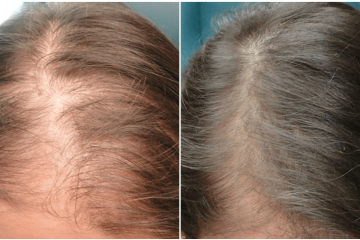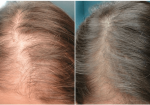Cerebral Palsy in Infants

Definition and Overview
Cerebral palsy (CP) is a lifelong brain disorder that affects normal motor function. It impacts how the brain and muscles coordinate, leading to challenges in movement and posture. Cerebral palsy is not a single condition but a group of disorders that can vary in severity and symptoms. It primarily affects a child’s ability to move and maintain balance and posture.
Causes and Risk Factors
The causes of cerebral palsy are often linked to abnormalities in brain development or damage to the developing brain. This can occur before, during, or shortly after birth. Some potential causes include:
- Infections during pregnancy such as rubella or chickenpox.
- A lack of oxygen to the baby’s brain during labor and delivery.
- Severe jaundice in the newborn.
- Brain infections like meningitis during infancy.
There are also risk factors that can increase the likelihood of an infant developing cerebral palsy, including premature birth, low birth weight, and multiple births (like twins or triplets).
Prevalence and Statistics
Cerebral palsy is one of the most common motor disabilities in childhood. According to the Centers for Disease Control and Prevention (CDC), about 1 in 345 children has been identified with CP. The condition can manifest differently in each child, with some experiencing mild symptoms, while others may have more severe impairments. Early intervention is crucial, especially for infants at high risk, as it can significantly improve outcomes.
Identifying Early Motor Development Delays
Delayed Sitting and Crawling
One of the first signs that may indicate cerebral palsy in infants is a delay in reaching motor milestones, such as sitting up or crawling. Typically, babies sit without support by around six months and begin crawling by nine months. If an infant struggles to achieve these milestones, it could suggest a motor development delay. Parents should be observant of any significant delays and consult a healthcare provider if concerns arise.
Challenges in Rolling Over
Rolling over is another critical milestone that infants usually achieve by six months. Babies with cerebral palsy might exhibit difficulty or reluctance in rolling over. This challenge often stems from issues with muscle tone or coordination, making it hard for the infant to perform this movement smoothly. Keeping an eye on how and when a baby rolls over can provide early clues about their motor development.
Walking Difficulties
Walking is a significant milestone that typically occurs between 12 to 15 months of age. For infants with cerebral palsy, walking might be delayed or accompanied by unusual patterns, such as walking on tiptoes or with a scissor-like gait. These walking difficulties often relate to muscle stiffness or weakness, which can impact balance and coordination. Recognizing these signs early allows for timely intervention and support, which can be crucial for the child’s development.
Recognizing Abnormal Muscle Tone
Stiff or Loose Muscles
In infants with cerebral palsy, muscle tone can be quite unpredictable. Muscle tone refers to the resistance of muscles to passive stretch. Some babies may exhibit muscles that are unusually stiff or rigid, while others might have muscles that are overly loose and floppy. This inconsistency in muscle tone can make it challenging for infants to achieve normal movement patterns. For instance, a baby with stiff muscles might struggle to relax their limbs, while one with loose muscles might find it difficult to maintain a stable posture.
Uneven Muscle Tone
Uneven muscle tone is another early sign that parents and caregivers might notice. This condition means that muscle tone is not consistent throughout the body. An infant may have one arm that is more rigid than the other or a leg that feels floppier in comparison. Such variations can affect how a baby moves and interacts with their environment. Parents might observe that their child favors one side of their body when reaching for toys or turning their head, which could be indicative of uneven muscle tone.
Spasticity and Rigidity
Spasticity and rigidity are terms often associated with cerebral palsy. Spasticity refers to muscles that are continuously contracted, leading to stiffness and tightness. On the other hand, rigidity implies a more constant state of muscle stiffness. These conditions can severely limit an infant’s range of motion and make everyday activities, like grasping objects or sitting up, difficult. Dyskinetic cerebral palsy in children often involves fluctuating muscle tone, where muscles can alternate between being overly tight and too loose, further complicating movement and coordination.
Observing Posture and Movement Issues
Abnormal Posture
When it comes to observing posture in infants with cerebral palsy, one might notice that their posture doesn’t seem quite right. Abnormal posture can be an early sign of this condition. Babies might hold themselves in unusual positions or have difficulty maintaining a typical posture. For instance, they might arch their back excessively or have a noticeable asymmetry in the way they hold their body. These signs can be subtle, but they are important to recognize early on.
Involuntary Movements
Involuntary movements are another aspect to watch out for. Infants with cerebral palsy might exhibit movements that they cannot control. These can range from slow and writhing to rapid and jerky. Such movements can make it hard for the child to perform everyday tasks and can vary significantly from one day to the next. Parents often notice these movements during times when the child is supposed to be at rest.
Coordination Challenges
Coordination issues are also a hallmark of cerebral palsy in infants. Babies might struggle with tasks that require coordinated movements, such as reaching for objects or moving their limbs in a synchronized manner. This lack of coordination can affect their ability to achieve motor milestones like crawling or walking. It’s essential to monitor these developmental milestones closely because early intervention can make a significant difference in the child’s progress. Coordination challenges can be particularly pronounced in cases of dyskinetic cerebral palsy, where maintaining posture becomes a significant hurdle.
Detecting Speech and Communication Difficulties
Speech Delays
Speech delays are often one of the first indicators of communication challenges in children with cerebral palsy. Parents might notice their child is not babbling or forming words as expected for their age. This delay can be due to the brain’s impaired ability to coordinate the muscles needed for speech. Early intervention is crucial to help improve speech development, and speech therapy can play a significant role in addressing these delays.
Pronunciation Challenges
Children with cerebral palsy may also struggle with pronunciation. They might have difficulty articulating certain sounds or words, which can make their speech hard to understand. This can be frustrating for both the child and the listener. To support children with these challenges, consistent practice and specialized speech therapy techniques are often recommended. In some cases, assistive technology may also be used to aid communication.
Nonverbal Communication
For some children with cerebral palsy, verbal communication may be extremely challenging, leading them to rely on nonverbal methods. This can include gestures, facial expressions, or the use of communication devices. Understanding and supporting a child’s preferred method of communication is essential for their social development and interaction with others. Speech therapy can help develop these nonverbal skills, ensuring the child can effectively express their needs and emotions. For more information on speech therapy for cerebral palsy, consider exploring the various treatment options available to enhance communication skills.
Spotting Feeding and Swallowing Problems
Feeding and swallowing issues are often among the first indicators that an infant might be experiencing challenges related to cerebral palsy. These difficulties can significantly affect a child’s ability to receive adequate nutrition, which is crucial for growth and development.
Difficulty Swallowing
Infants with cerebral palsy may struggle with swallowing, a condition known as dysphagia. This can lead to coughing or choking during feeding, and in severe cases, the risk of aspiration. Caregivers might notice that the baby takes unusually long to finish a bottle or has difficulty coordinating breathing and swallowing. Identifying these issues early is essential to prevent complications such as pneumonia or malnutrition.
Excessive Drooling
Excessive drooling is another sign that might indicate neurological issues in infants. While drooling is common in babies, particularly during teething, persistent drooling can suggest muscle control problems around the mouth. This symptom can be linked to difficulties in managing saliva due to poor muscle tone or coordination, which are common in cerebral palsy.
Feeding Challenges
Feeding a child with cerebral palsy can be a complex task. Parents may notice that their child has trouble latching onto the breast or bottle, or that they appear to tire quickly during feeding sessions. Some infants might exhibit a strong preference for certain textures or temperatures of food, which can complicate meal planning. Here are a few common challenges:
- Inability to suck effectively, leading to inadequate intake of milk or formula.
- Resistance to solid foods due to texture sensitivity.
- Difficulty transitioning from bottle to cup, which can delay developmental milestones.
Addressing these challenges often requires a multidisciplinary approach, involving pediatricians, speech therapists, and nutritionists to create a tailored feeding plan. For more information on the early signs of cerebral palsy in infants, including feeding difficulties, please refer to our comprehensive guide.
Monitoring Fine Motor Skill Development
Grasping and Clapping Issues
In the early stages of a child’s life, fine motor skills are essential for everyday tasks. One of the first signs to watch for in infants is their ability to grasp objects. Babies typically start to hold objects by three to four months. If a child shows difficulty in grasping toys or doesn’t attempt to hold onto things like a parent’s finger, it might be a sign of concern. Clapping, which usually develops around nine months, can also be a challenge. Infants with cerebral palsy might have trouble bringing their hands together or may not clap at all. These early signs can indicate potential developmental delays.
Difficulty with Fine Motor Tasks
As children grow, they begin to engage in more complex fine motor tasks. These include actions like picking up small objects, turning pages in a book, or using utensils during meals. A child with cerebral palsy may struggle with these tasks due to poor hand-eye coordination or muscle tone issues. Parents might notice their child having difficulty stacking blocks, scribbling with crayons, or buttoning clothes. Fine motor challenges can affect a child’s ability to perform tasks that are typical for their age.
Impact on Daily Activities
Fine motor skills are not just about play; they impact daily living activities. Children with cerebral palsy may find it hard to perform tasks that require precision, such as tying shoelaces or zipping up jackets. This can lead to frustration and a sense of dependency on others for basic tasks. Monitoring these skills is crucial as they play a significant role in a child’s independence and confidence. Parents and caregivers should be aware of these potential issues and seek early intervention for children with cerebral palsy to support their development.
Evaluating Cognitive and Sensory Impairments
Cognitive Development Delays
Cognitive development delays in infants with cerebral palsy can be tricky to spot early on. Parents might notice their child isn’t meeting typical milestones like recognizing familiar faces or responding to their name. It’s crucial to pay attention to these signs, as early intervention can make a significant difference. Cognitive delays might manifest as difficulties with memory, problem-solving, or learning new skills. In some cases, these challenges are linked to other conditions, such as intellectual disabilities or autism.
Sensory Processing Issues
Sensory processing issues are another aspect to consider. Infants with cerebral palsy might have trouble processing sensory information, which can affect their ability to interact with the world around them. For example, they might be overly sensitive to light or sound, or they might not respond to touch or pain in a typical way. These sensory challenges can lead to difficulties in daily activities and interactions. Understanding and addressing these issues early on can help improve the child’s quality of life.
Impact on Learning
The impact of cognitive and sensory impairments on learning is significant. Children with cerebral palsy may face challenges in traditional learning environments due to these impairments. They might require specialized educational programs or therapies to support their learning needs. It’s essential to tailor educational strategies to each child’s unique needs, ensuring they have the best possible chance to succeed. Parents and caregivers should work closely with educators and specialists to develop an appropriate learning plan.
Understanding the Role of Medical Diagnosis
Diagnostic Tests and Procedures
Diagnosing cerebral palsy in infants involves a series of steps and tests, each contributing crucial information. Doctors often start with a thorough physical examination, checking for signs like muscle tone irregularities or unusual reflexes. MRI scans and CT scans are commonly used imaging techniques that provide detailed pictures of the brain, helping to identify any damage or abnormalities. Genetic testing might also be conducted to rule out other conditions and ensure an accurate diagnosis.
Role of Specialists
A team of specialists is usually involved in diagnosing cerebral palsy, including pediatric neurologists, orthopedists, and physiatrists. These experts bring different perspectives and expertise to the table, ensuring a comprehensive evaluation. They often collaborate to interpret test results and decide on the best course of action for each child.
Importance of Early Intervention
Early diagnosis is vital because it paves the way for timely intervention, which can significantly impact a child’s development. Once a diagnosis is confirmed, a tailored intervention plan can be developed. This might include physical therapy, occupational therapy, and other supportive measures to help the child reach their full potential. Recognizing early signs like lethargy and irritability can lead to quicker diagnosis and better outcomes.
Exploring Treatment and Support Options
Physical and Occupational Therapy
Physical and occupational therapy are often the first steps in managing cerebral palsy. Therapists work closely with children to improve their mobility and independence. Physical therapy focuses on strengthening muscles and enhancing movement, while occupational therapy helps with daily activities like dressing and feeding. These therapies are tailored to the child’s needs and can make a big difference in their quality of life.
Assistive Devices and Technologies
Assistive devices can be a game-changer for children with cerebral palsy. These include wheelchairs, walkers, and communication devices. Technology has advanced, providing more options for kids to interact with their environment. Parents and caregivers should explore different devices to find the best fit for their child’s unique needs.
Family and Community Support
The role of family and community support cannot be overstated. Families should seek out support groups and community resources to connect with others facing similar challenges. Sharing experiences and advice can be incredibly helpful. Communities can provide emotional support and practical help, creating a network that benefits both the child and their family. Effective management of cerebral palsy involves ensuring adequate nutrition, maintaining a safe home environment, engaging in recommended exercises, and practicing proper bowel care.
Addressing Common Misconceptions
Myths About Cerebral Palsy
Cerebral palsy (CP) is often surrounded by myths, leading to confusion and misunderstanding. One common myth is that CP is a progressive disease. This is not true. While symptoms can change over time, the condition itself does not worsen. Another misconception is that all individuals with CP have the same symptoms and severity. In reality, CP varies greatly from person to person, affecting each individual differently.
Clarifying Misunderstandings
It’s important to clarify some misunderstandings about cerebral palsy. For instance, many believe CP is solely caused by complications during birth. However, it can also result from genetic factors or infections during pregnancy. Additionally, people often assume that individuals with CP cannot lead independent lives. With the right support and resources, many people with CP can achieve significant independence.
Educating the Public
Educating the public about cerebral palsy is crucial to dispel myths and foster understanding. Key points to emphasize include:
- CP is not contagious and cannot be “caught” from another person.
- It is not a mental illness, although some individuals may have coexisting conditions like intellectual disabilities.
- Early intervention and therapies can significantly improve quality of life.
For more detailed insights on common questions following a cerebral palsy diagnosis, refer to expert answers that provide clarity and guidance for parents.
How to Seek Compensation for Birth Injury Medical Costs
















